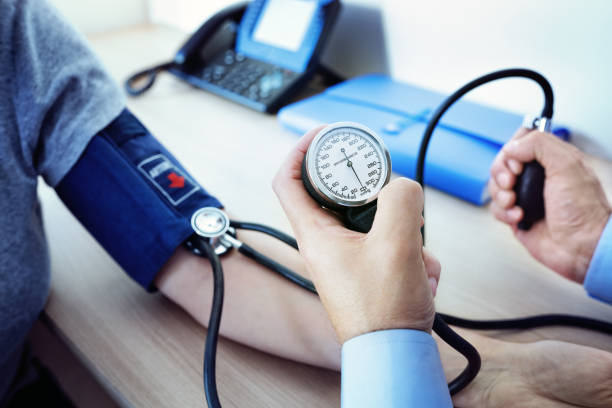How to Check Your Blood Pressure: Understanding, Measuring, and Managing
How to Check Your Blood Pressure: Understanding, Measuring, and Managing

Monitoring your blood pressure is a critical aspect of maintaining optimal health. Blood pressure readings can provide vital insights into your cardiovascular health, signaling whether you’re at risk for conditions like heart disease or stroke. This comprehensive guide will walk you through understanding blood pressure, the differences between low and high blood pressure, and how to accurately measure it at home or in a clinical setting.

Understanding Blood Pressure
Blood pressure is a critical aspect of cardiovascular health, indicating the force exerted by circulating blood on the walls of blood vessels. It is a key vital sign, measured in millimeters of mercury (mm Hg), and presented as two numbers: systolic blood pressure over diastolic blood pressure. Systolic pressure, the higher number, measures the force when the heart beats, while diastolic pressure, the lower number, measures the force when the heart rests between beats.
Understanding the differences between low BP (hypotension) and high BP (hypertension) is crucial for maintaining overall health and preventing complications.
High Blood Pressure (Hypertension)
Hypertension occurs when BP is consistently too high. It often develops over many years and can go unnoticed, as it may not produce noticeable symptoms. However, it can cause significant damage to the heart, blood vessels, kidneys, and other parts of the body.
Causes: While the exact causes of hypertension are often unclear, several factors increase the risk, including obesity, smoking, lack of physical activity, too much salt in the diet, excessive alcohol consumption, stress, genetics, and chronic conditions such as kidney disease and diabetes.
Risks: Uncontrolled hypertension can lead to heart attack, stroke, heart failure, kidney disease, vision loss, and other serious health issues.
Symptoms: Hypertension is often called a “silent killer” because it may not produce symptoms until it causes significant damage. Some people with high blood pressure may experience headaches, shortness of breath, or nosebleeds, but these symptoms aren’t specific and usually don’t occur until high BP has reached a severe or life-threatening stage.

Low Blood Pressure (Hypotension)
Hypotension is a condition where blood pressure is lower than normal. In many cases, low blood pressure is a sign of good health and poses no risks. However, if BP drops too low, it can cause dizziness and fainting or indicate serious heart, endocrine, or neurological disorders.
Causes: Dehydration, prolonged bed rest, nutritional deficiencies, decrease in blood volume, certain medications, heart problems, pregnancy, and endocrine disorders can all cause low blood pressure.
Risks: Although low blood pressure is less common than high BP, it can be dangerous if it causes a sudden drop in blood flow to organs. This can lead to shock—a life-threatening condition characterized by cold, clammy skin, rapid breathing, and a weak and rapid pulse.
Symptoms: Symptoms of hypotension include dizziness, fainting, blurred vision, nausea, fatigue, lack of concentration, and in severe cases, shock.
Measuring Blood Pressure
Equipment Needed
To measure BP , you’ll need a blood pressure monitor, which could be an aneroid monitor or a digital one. Many people prefer digital monitors for their ease of use and readability.
Step-by-Step Guide to Measuring Blood Pressure

- Prepare for the Measurement: Relax for 5-10 minutes before taking your reading. Place your arm on a flat surface, ensuring it’s at heart level.
- Wrap the Cuff: Place the cuff on your upper arm, making sure it’s snug but not too tight. The cuff’s lower edge should be about an inch above the bend of your elbow.
- Take the Reading: If you’re using a manual monitor, you’ll need to inflate the cuff and slowly release it while listening for your heartbeat. With a digital monitor, the process is automated.
- Record Your Reading: Note down the systolic and diastolic numbers. It’s helpful to track your readings over time to observe trends and discuss them with your healthcare provider.
Using a Manual Blood Pressure Monitor:

Manual monitors require a stethoscope and some practice to interpret the sounds of the heartbeat accurately.
- Prepare and Position: As with a digital monitor, sit quietly and position the cuff on your bare upper arm.
- Locate Your Pulse: Place the stethoscope’s chest piece over the brachial artery, just below the cuff’s edge.
- Inflate the Cuff: Inflate the cuff manually by pumping the bulb until the gauge reads about 30 mmHg above your usual systolic pressure.
- Deflate and Listen: Slowly release the valve on the cuff and listen through the stethoscope. The first thump sound (systolic pressure) and the point where the thumping stops (diastolic pressure) are your BP readings.
Tips for Accurate Readings
- Avoid caffeine, smoking, or exercise for at least 30 minutes before taking your BP
- Use the restroom beforehand; a full bladder can affect your reading.
- Measure at the same time each day for consistency.
- Take multiple readings and calculate the average for the most accurate representation.
Understanding Your Reading
- Normal: Below 120/80 mmHg
- Elevated: 120-129/less than 80 mmHg
- Hypertension: 130-139/80-89 mmHg
- Hypotensive: Generally considered if below 90/60 mmHg, but dependent on individual symptoms and conditions.
Managing Blood Pressure
Managing BP involves a combination of lifestyle changes and, if necessary, medication. For high BP, it’s crucial to eat a balanced diet, reduce salt intake, engage in regular physical activity, maintain a healthy weight, limit alcohol consumption, quit smoking, and manage stress. For low BP, increasing salt and water intake, eating small frequent meals, rising slowly to prevent dizziness, and possibly wearing compression stockings can help. Regular monitoring of your BP at home and consulting with a healthcare provider are essential steps to ensure your management strategies are effective and your blood pressure remains within a healthy range.

Conclusion
Regularly monitoring your BP can be a key factor in maintaining cardiovascular health and detecting potential health issues early. By understanding how to accurately measure your BP and interpret the readings, you can take proactive steps towards a healthier life, stay informed, and be empowered to manage your well-being.





